Construction traffic signs are a vital component of any road construction site, serving as crucial communication tools to ensure the safety of both workers and the public. These signs are designed to provide clear and concise instructions, warnings, and information to drivers and pedestrians navigating through construction zones.
With bold colors, universally recognized symbols, and large, easily readable text, construction traffic signs effectively convey essential messages regarding changes in traffic patterns, speed limits, lane closures, and potential hazards. By adhering to these signs, motorists can contribute to a safer work environment for construction crews, minimize traffic congestion, and ultimately prevent accidents and injuries. Understanding their significance is essential for promoting a culture of safety and awareness in construction areas, ultimately benefiting everyone on the road.
What Do Construction Traffic Signs Mean?
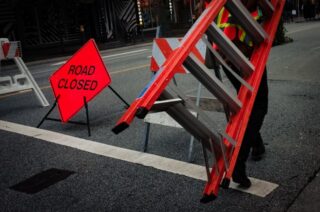 Construction traffic signs convey crucial information to drivers and pedestrians navigating through construction zones. These signs communicate a variety of messages, such as lane closures, detours, speed limit reductions, and potential hazards ahead. They also indicate the presence of construction workers, heavy machinery, and temporary changes in the road layout.
Construction traffic signs convey crucial information to drivers and pedestrians navigating through construction zones. These signs communicate a variety of messages, such as lane closures, detours, speed limit reductions, and potential hazards ahead. They also indicate the presence of construction workers, heavy machinery, and temporary changes in the road layout.
By understanding and obeying these signs, road users can adapt to the dynamic conditions of construction sites, thereby ensuring the safety of themselves, construction workers, and other motorists. They play a pivotal role in guiding traffic flow and minimizing the risk of accidents or delays in and around construction areas.
What Material are Construction Traffic Signs Made?
They are made from durable materials – mainly aluminum or PVC if portable – designed to withstand outdoor conditions and ensure visibility in various lighting and weather situations. Common materials used for construction traffic signs include aluminum, sheeted with retro-reflective vinyl – which is lightweight, corrosion-resistant, and offers excellent reflectivity, even at night. Reflective sheeting comes in various grades, with higher grades offering superior reflectivity and longevity.
Do Construction Traffic Signs Need to Comply to MUTCD Standards?
Yes, they are required to comply with the standards set forth by the Manual on Uniform Traffic Control Devices (MUTCD). The MUTCD provides guidelines and regulations for the design, placement, and operation of traffic control devices, including signs, signals, and pavement markings. Compliance with MUTCD standards ensures consistency in the use of construction traffic signs across different locations and jurisdictions, promoting safety, efficiency, and uniformity in traffic control.
By adhering to these standards, construction traffic signs can effectively convey essential information to road users, minimize confusion, and ultimately contribute to a safer work environment for construction crews and the traveling public. Furthermore, compliance with MUTCD standards helps to reduce the potential for legal liabilities and ensures that construction projects meet regulatory requirements for traffic control.
Recommended Color and Shape
Color
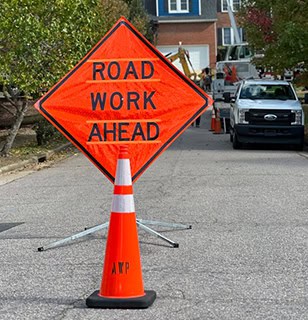
Construction traffic signs often feature bold, highly visible colors to ensure maximum attention and recognition by road users. The most commonly recommended colors for construction traffic signs are orange with black copy or pictograms.
These vibrant colors stand out against the surrounding environment, making the signs easily noticeable, especially in low-light conditions or during inclement weather. The use of orange and fluorescent yellow-green enhances the visibility of construction traffic signs, helping to alert drivers and pedestrians to changes in traffic patterns, road conditions, and potential hazards within construction zones.
Shape
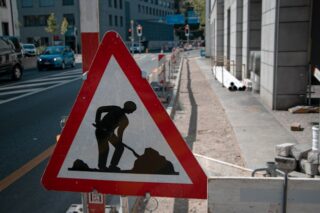
The required shape for construction traffic signs is typically rectangular or diamond-shaped. Rectangular signs are commonly used to convey regulatory and guide signs, displaying essential information such as speed limits, lane closures, and detour routes.
On the other hand, diamond-shaped signs are often employed for warning signs, indicating potential hazards, construction zones, or changes in road conditions. The use of these standardized shapes helps road users easily recognize the type of information being conveyed, promoting quick comprehension and appropriate responses.
Common Construction Traffic Signs
1. Detour Signs: These signs indicate alternative routes for drivers to follow when the regular route is closed due to construction or maintenance work. They are typically diamond-shaped with black letters or symbols on an orange background.
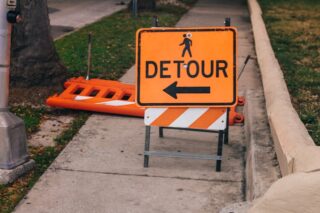 2. Road Work Signs: These signs identify construction, maintenance, utility, or emergency operations areas and warn drivers that workers or equipment may be on or near the roadway. They may include warnings for reduced speed, changing road surfaces, lane closures, detours, and slow-moving construction equipment. These signs are also diamond-shaped with black letters or symbols on an orange background.
2. Road Work Signs: These signs identify construction, maintenance, utility, or emergency operations areas and warn drivers that workers or equipment may be on or near the roadway. They may include warnings for reduced speed, changing road surfaces, lane closures, detours, and slow-moving construction equipment. These signs are also diamond-shaped with black letters or symbols on an orange background.
3. End Road Work Signs: Placed at the conclusion of construction zones, these signs inform drivers that they are leaving the construction area and can resume normal driving conditions. They are also diamond-shaped with black letters or symbols on an orange background.
4. Flagger Ahead Signs: These signs alert drivers to the presence of flaggers who manage traffic around the perimeter of the job site. They are crucial for ensuring the safety of both workers and drivers in construction zones.
Are Construction Traffic Signs Required to be Retroreflective?
Yes, they are required to be retroreflective to ensure optimal visibility, especially during low-light conditions or at night. Retro-reflectivity allows signs to reflect light back toward its source, making them easily visible to drivers and pedestrians. This is crucial in construction zones where visibility may be compromised due to temporary changes in road layout, reduced lighting, or the presence of construction equipment.
Retroreflective construction traffic signs enhance safety by improving the visibility of critical information such as lane closures, detours, speed limits, and potential hazards. By incorporating retroreflective materials, these signs effectively communicate important messages to road users, contributing to safer navigation through construction areas and reducing the risk of accidents.
How Durable are Construction Traffic Signs?
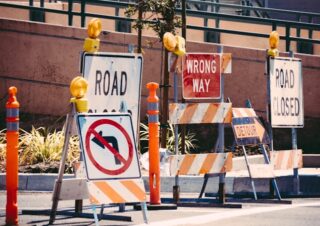 They are designed to be durable, capable of withstanding the rigors of outdoor use and exposure to various weather conditions. These signs are typically constructed from robust materials such as aluminum, high-density plastics, or composite materials, all of which offer excellent resistance to corrosion, fading, and physical damage.
They are designed to be durable, capable of withstanding the rigors of outdoor use and exposure to various weather conditions. These signs are typically constructed from robust materials such as aluminum, high-density plastics, or composite materials, all of which offer excellent resistance to corrosion, fading, and physical damage.
Also, many construction traffic signs are coated with protective finishes to enhance their durability and longevity. This ensures that the signs remain effective and visible throughout the duration of construction projects, even in demanding environments. Their durability is essential for maintaining clear communication with road users, promoting safety, and minimizing the need for frequent replacement or maintenance.
Conclusion
Construction traffic signs play a vital role in ensuring the safety and efficiency of traffic flow within construction zones. By employing bold colors, standardized shapes, retroreflective materials, and durable construction, these signs effectively communicate essential information to drivers and pedestrians, alerting them to changes in road conditions, potential hazards, and alterations in traffic patterns. Ultimately, construction traffic signs contribute to the overall safety of construction sites and the traveling public, promoting clear communication and awareness while minimizing the potential for accidents or confusion.
Popular Posts:




